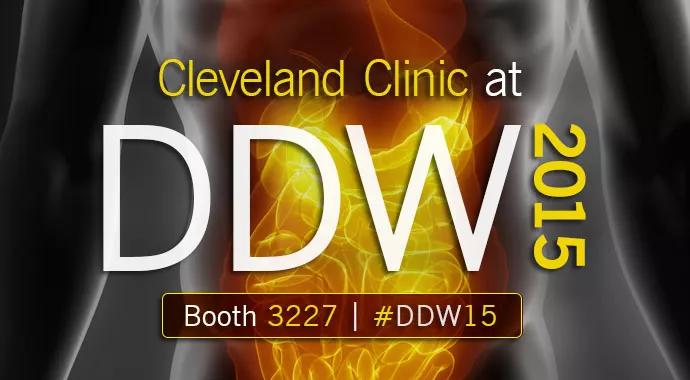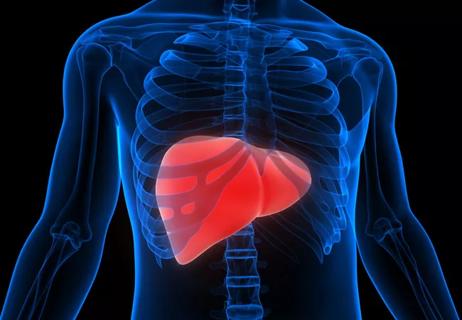May serve as a marker of liver disease severity

Levels of volatile organic compounds (VOCs) in exhaled breath can identify advanced fibrosis in patients with chronic liver disease (CLD), say Cleveland Clinic researchers who presented their findings today at Digestive Disease Week 2015.
Advertisement
Cleveland Clinic is a non-profit academic medical center. Advertising on our site helps support our mission. We do not endorse non-Cleveland Clinic products or services. Policy
In a study that used selective ion flow tube mass spectrometry (SIFT-MS) to analyze breath samples, patients with advanced fibrosis were found to have significantly lower values of six compounds, compared with patients without advanced fibrosis. Of these compounds, isoprene had the highest accuracy for predicting the presence of advanced liver fibrosis.
“This suggests that VOCs are a potential biomarker for advanced fibrosis. We concluded breath testing could be developed as a noninvasive alternative to liver biopsy for identifying these patients,” says principal investigator, Naim Alkhouri, MD.
The researchers recruited 61 patients undergoing liver biopsy, 44 percent with chronic hepatitis C, 30 percent with nonalcoholic fatty liver disease (NAFLD) and 26 percent with other CLD. No patient had clear evidence of end-stage liver disease or portal hypertension.
Fibrosis was determined by an experienced pathologist, with 20 patients diagnosed with advanced fibrosis (F3-F4) and 41 with no significant fibrosis (F0-F2). Exhaled breath and fasting plasma samples were collected on the day of the biopsy.
After testing for 21 VOCs, levels of six compounds (acetone, benzene, carbon disulfide, isoprene, pentane and ethane) were shown to be statistically lower in patients with advanced fibrosis than in those with minimal fibrosis. Of these, isoprene had the highest AUC for predicting the presence of advanced liver fibrosis on biopsy, with the likelihood of advanced fibrosis decreasing by 10 percent for every one unit increase in isoprene.
Advertisement
Patients with advanced fibrosis also trended toward having lower serum levels of isoprene compared to those without advanced fibrosis, further validating the value of isoprene in exhaled breath analysis.
“This should be no surprise, since isoprene is a byproduct of cholesterol biosynthesis. Our results suggest this pathway may be impaired in patients with advanced liver fibrosis and compensated liver disease well before the development of low plasma cholesterol levels, which are characteristic of patients with end-stage liver disease,” says Dr. Alkhouri.
A cutoff value of 29 parts per billion (ppb) was effectively used to maximize sensitivity and rule out the presence of advanced fibrosis. A cutoff of 14.1 ppb was used to maximize specificity and rule in the presence of advanced fibrosis.
“Using these two cutoffs would enable us to diagnose advanced fibrosis with a high degree of accuracy and avoid a liver biopsy in 75 percent of patients,” says Dr. Alkhouri.
Liver biopsy remains the gold standard test for determining the presence of advanced liver fibrosis. However, it is an invasive test with potentially serious complications.
Newer laboratory and imaging tests to diagnose liver fibrosis noninvasively have been developed, but require sophisticated equipment, have interobserver variability and may not be reliable in obese patients.
In contrast, SIFT-MS does not require specific preparation or the ingestion of any compounds. This opens the door for the development of a practical, noninvasive breath test — an option the researchers intend to explore.
Advertisement
“Our goal is to develop a small, inexpensive, hand-held device that could be used in the office to provide a real-time diagnosis of advanced liver disease,” says Dr. Alkhouri.
For more information, contact Dr. Alkhouri at alkhoun@ccf.org.
Advertisement
Advertisement

The importance of raising awareness and taking steps to mitigate these occurrences

New research indicates feasibility and helps identify which patients could benefit

Standardized and collaborative care improves liver transplantations

Caregiver collaboration and patient education remain critical

Beyond recognizing and treating food allergies, GIs also have a responsibility to address common food allergy misconceptions

Important to recognize limitations when it comes to healthcare and research

Findings reinforce the importance of multidisciplinary care

Underlying inflammation may cause higher rates of CV events